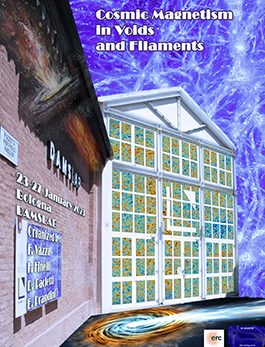Speaker
Description
The abstract is splitted into two paragraphs. The first paragraph is a
general description, while the second paragraph gives the description
of the primordial magnetism aspects. If you think that the abstract is
too long, please use just the first paragraph. It is completely up to
you.
Abstract:
The detection of the relic magnetic fields through cosmological or
astrophysical observations would provide a wealth of information about
the conditions and composition of our universe in the first fractions
of a second after the Big Bang. For example, the magnetic field
induced gravitational radiation propagates almost freely throughout
the cosmic history, and primordial gravitational waves reflect a
precise picture of the universe at their time of production. A host
of empirical observations are being used to probe cosmological
magnetic fields in our universe today. The cosmological signatures
include effects on primordial (Big Bang) nucleosynthesis, generation
of relic gravitational waves, effects on the cosmic microwave
background (CMB) temperature and polarization anisotropies, effects on
the CMB energy spectrum via distortions, effects on the formation of
stars and galaxies, and effects on the spatial distribution of large
scale structure. Although these cosmological observations have not
yet uncovered evidence for a primordial magnetic field, they provide
valuable constraints on theoretically-compelling models of
magnetogenesis. In my talk I will be focused on the origin, evolution
and observational consequences of turbulence and magnetic fields,
including physical processes in the early-universe.
From the perspective of elementary particle physics, it is natural to
expect that a primordial magnetic field may have arisen in the extreme
environment of the early universe. Epochs at which the system is
susceptible to large amplitude inhomogeneities provide especially
strong candidates for magnetogenesis; these include cosmological phase
transitions -- in a general sense, both the end of the inflation and
thermal phase transitions are examples of cosmological phase
transitions, The primordial plasma's high conductivity insures a
strong coupling between the seed magnetic field and the fluid motions,
and the plasma's high Reynolds number makes the plasma susceptible to
the development of turbulence. After the seed magnetic field is formed
at the magnetogenesis epoch, its subsequent evolution is governed by a
coupling to plasma turbulence, decay due to adiabatic expansion and
Alfv\'enic unfolding, and resistive dissipation. These effects must
be taken into account in order to derive predictions for the
observable signatures of primordial magnetism today. My talk will
present a brief overview of different aspects of primordial magnetism.

